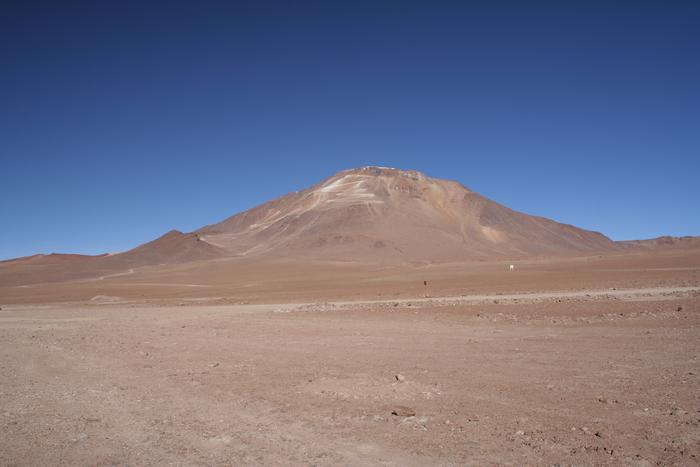The University of Tokyo Atacama Observatory (TAO) has officially opened, giving astronomers an infrared eye on the universe that will last when JWST runs out of fuel. At 5,640 meters (18,500 feet) above sea level, the location is the highest for a ground-based telescope. The challenges of getting it built, however, reveal why no one has done this before.
Anyone who has camped on a mountainside knows how much clearer the stars can look there. It’s not just about being away from city lights, although that certainly matters, it’s the fact that there is a lot less atmosphere above to interfere. Even though space is not usually defined as starting until 100 kilometers (62 miles) up, half the air is below this location.
Much as the focus is on the Hubble and JWST telescopes, many of the advances in astronomy in recent years have come, at least in part, from giant mountain-top telescopes that can be larger than anything we can put in space just yet. The more remote the location, however, the more expensive it becomes to build an observatory there.
For most instruments, Paranal Observatory, elsewhere in the Atacama Desert, or the top of Mauna Kea have proven a good compromise, but infrared wavelengths are more affected by water vapor in the atmosphere than their optical counterparts, shifting the balance. To get above a little more air, Emeritus Professor Yuzuru Yoshii thought it worth paying the price of a harder-to-reach location. If he’d known it would take 26 years to get his goal built, however, he might have felt differently.
Cerro Chajnantor is a great place to do infrared astronomy not just because it is above half the atmosphere, but because it is so dry.
“I’m seeking to elucidate mysteries of the universe, such as dark energy and primordial first stars. For this, you need to view the sky in a way that only TAO makes possible,” Yoshii said in a statement. “Of course, it contains state-of-the-art optics, sensors, electronics and mechanisms, but the uniquely high altitude of 5,640 meters is what gives TAO such clarity of vision. At that height, there’s little moisture in the atmosphere to impact its infrared sight.”
The 6.5-meter (21-foot) diameter TAO sits at the top of Cerro Chajnantor, Chile. As an indication of how difficult this mountain is to reach, the first few hits when searching the name lead to stories about the telescope, followed by one on a website called “Dangerous Roads”. This reports the first road to the summit was only built in 2006 and requires four-wheel drive to navigate – hardly the ideal conditions for transporting ultra-sensitive astronomical equipment. The site also warns: “Do not take this drive if you have respiratory problems or any type of heart condition.”
The University of Tokyo’s new observatory isn’t the most impressive looking instrument, but its location is.
Even the opening ceremony was held a thousand kilometers (620 miles) away in Santiago.
By comparison, the Atacama Large Millimeter/submillimeter Array (ALMA) whose 54 12-meter (39-foot) diameter antennae have transformed astronomy in the last decade is just 5 kilometers (3 miles) away, but at 580 meters (1,900 feet) lower, it is much more accessible.
Yoshii is not the only one to see the site’s potential. Just 28 meters (92 feet) further down the same peak sits the slightly smaller Fred Young Submillimeter Telescope, which will operate at similar wavelengths when complete next year. This is intended as a precursor for a bigger instrument at the same location.
“Construction on the summit of Cerro Chajnantor was an incredible challenge, not just technically, but politically too. I have liaised with Indigenous peoples to ensure their rights and views are considered, the Chilean government to secure permission, local universities for technical collaboration, and even the Chilean Health Ministry to make sure people can work at that altitude in a safe manner,” Yoshii said.
With the Thirty Meter Telescope dogged by protests from Indigenous Hawaiians, the decision to get consultation right looks particularly wise in hindsight.
The payoff is an instrument that can operate at mid-infrared wavelengths, those too long for optical telescopes but too short for instruments like ALMA. Currently, this is the domain of space telescopes alone. “This area of the spectrum is extremely good for studying the environments around stars, including planet-forming regions,” said Professor Takashi Miyata.
The TAO will be capable of wide-field observations, allowing it to capture much more of the sky than space telescopes, which can then follow up for higher resolution.
Priority tasks include studying the way supermassive black holes shape the evolution of galaxies, exploring organic dust between the stars, finding the first stars, and the ongoing quest to identify dark matter.
Source Link: World’s Highest Astronomical Observatory Finally Opens – 5,640 Meters Above Sea Level
